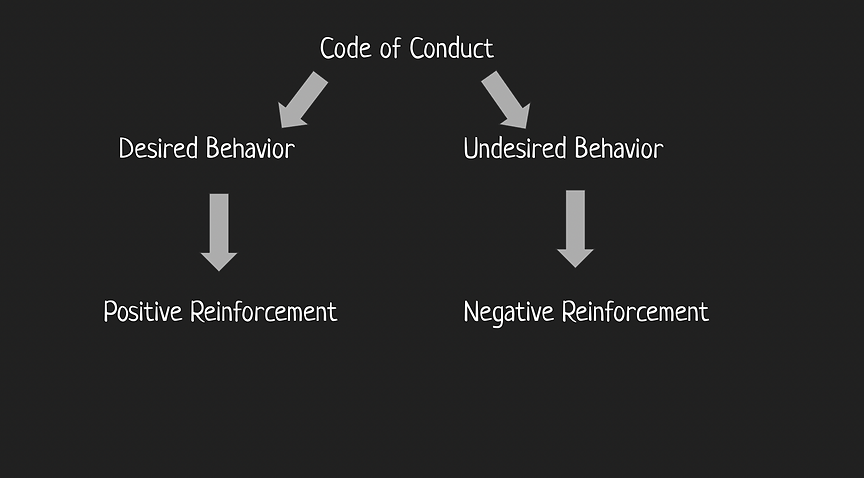Classroom Environment Guide
Code of Conduct

As an example of preventative discipline, this code displays the 5 more important rules I would like my students to remember at all times. The first rule being, “Be kind and respectful to yourself and your peers,” fosters a loving and caring environment between everyone in the classroom. The second rule makes sure students use their listening ears as it states, “Listen when other people are talking,” which also helps students practice with their manners and taking turns. The third rule ensures order will be kept in the classroom when it states, “Raise your hand to contribute - no
calling out,” and students are expected to use their indoor voices in the classroom. The fourth rule makes sure the students respect each other’s space as it states, “Keep your hands and feet to yourselves.” The last rule gives students some responsibility as it states, “Ask 3 before me,” which means to ask 3 others your question before you ask the teacher. This makes students more responsible within the classroom because it forces them to problem solve.
Implementation & Rationale
I would introduce this list of classroom rules on the first day of school so it sets the tone for the rest of the year. This way, students would know what is expected of them and how the teacher wants them to behave while in the classroom. By starting out the first day with the proper introduction, the students will have no confusion regarding the rules of the classroom. These rules foster a comfortable classroom environment where the students and teacher care for and respect each other. Students would also be given the opportunity to add any rules they think would be helpful in the classroom or alter any they may not think are fair. I would facilitate a class discussion where all students can share their opinions. These rules connect to and align with my philosophy because it highlights the aspect of student responsibility which is discussed by the theorists Linda Albert, Jacob Kounin and Alfie Kohn. By giving the students more responsibility in the classroom, it makes them feel as though they have helped create and contribute to their community, and they have! Students are also more willing to follow a set of rules they had a say in creating.
Discipline Approach

Creating a Healthy Learning Community
This specific code of conduct keeps social and emotional learning in mind as each rule is very student centered and has the students’ best interest in mind. The heart of social emotional learning is first focusing on who exactly is being taught, which are the students. A large part of social and emotional learning is self awareness and self management, and the rules within this code of conduct prompt students to become more independent and self aware of themselves and their surroundings. The code of conduct and discipline model also exemplify aspects of culturally responsive management because it contains high standards and expectations for each and every student regardless of their diverse background. The behavior popsicle sticks are utilized with every student as well, and the students are all held to the same set of rules as it is a student-centered approach to education.